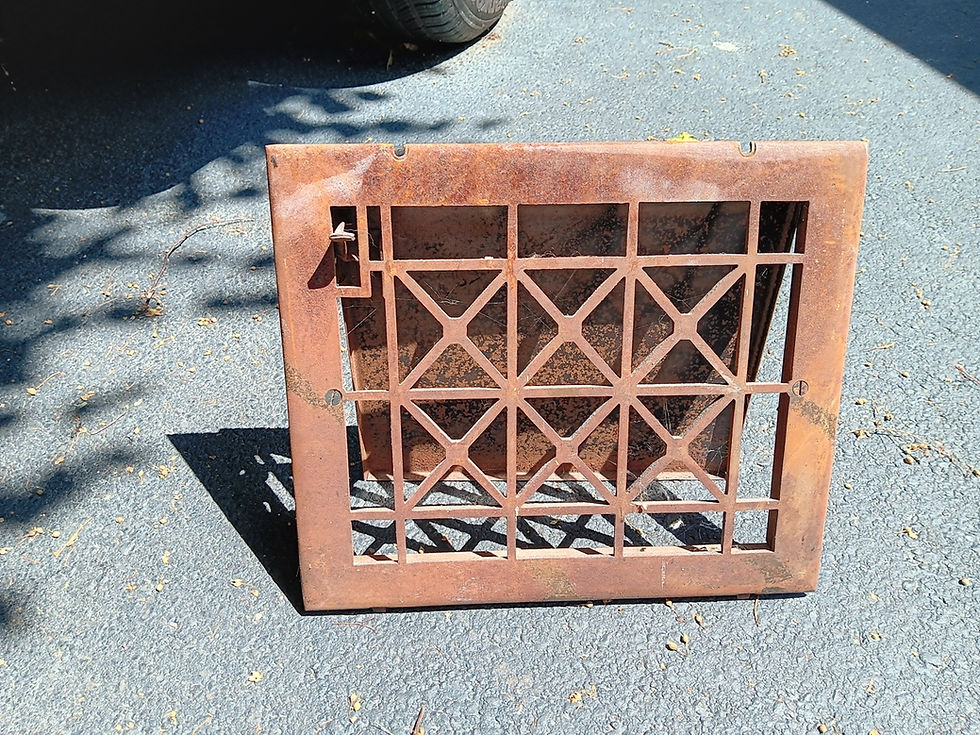Ideas from Ed: A Glass Class Volume 4, Issue 4
- edwardpetrus

- Apr 1, 2021
- 4 min read
With any luck, you may live near an excellent hardware store or glass shop, and if you need to replace a windowpane that’s 15 ¾ inches by 12 ¼ inches, a new piece of glass is only a phone call away. If you’re “cheap” like me, or just like doing things yourself, you can probably cut that piece yourself from scraps of glass you have tucked away just for odd uses like this.
First of all, let’s talk a bit about glass itself. “Old” glass is more difficult to cut than “new” glass, so re-using an old windowpane for something else may be a bit trickier than you’d expect. Glass comes in a variety of formulas, but for the homeowner, you’ll most likely only deal with “single strength” or “double strength” types. Obviously, the double strength is thicker, and is really all I’d ever use unless the application won’t allow you to replace a single strength piece with a thicker one. Glass edges are razor sharp, and tiny chips can go everywhere, so you should use eye protection for sure, and when handling pieces, consider gloves or at least avoid touching any cut edges.
Glass cutters are usually a straightforward design.They consist of some type of handle to hold, and a cutting edge that typically is a small cutting wheel.The nicer ones have a diamond for the cutting point.Glass “cutters” really don’t cut the glass.They just “score” it so that it can be broken on the score line.Here’s my collection of cutters, with my good diamond cutter to the far left in the photo:

What I found to be most helpful was to construct the “cutting board” shown below. It’s made of plywood, with 1x2s under to raise it off the surface, and very-carefully-attached guide strips to make a perfect 90-degree angle. Note that the guide strip on the right is a bit away from the edge of the board, and is hinged. It also has a spacer under the back swivel point, allowing a piece of glass to be placed nicely under it. Then the movable guide can be pushed against the fixed guide, giving a perfect track for your cutter to follow.


I suggest placing a couple of pieces of newspaper on top of the plywood to minimize any surface irregularities. You want the work surface to be firm, but as even and smooth as possible.

Prior to putting the piece of glass in place, it needs to be cleaned. Any good glass cleaner will work. With the diamond cutter, I cut the glass “dry,” but if I use a regular cutter, things work best if just a bit of mineral oil or kerosene is wiped along the cutting line. The glass is placed under the movable guide and against the stationary guide. The cutting line will be apparent when you place your cutter against the guide – the line will be a smidge away from the guide because of the thickness of the cutter itself.


Glass has an outer layer (both sides) in compression, and an inner layer in tension. Your goal is to slice just enough into one of the outer layers to create an obvious “weak spot” where the glass will break. Thus, your pressure on the glass will make or break (no pun intended) this project. The diamond cutter takes less pressure than a standard cutter. The goal is to hear the glass “sing” as you smoothly draw the cutter along the guide. Typically, you should start about 1/8 of an inch away from the far side, and pull the cutter completely off the near side. Then, go back and catch that last 1/8 inch piece, going in the opposite direction. You only get one chance at this, because you should never go over the line twice! If you’re getting tiny chips of glass as you go, the pressure is too high.
Once the glass is scored, it can be slid to the right, placing the score perfectly over the edge of the cutting board. (This is why it’s raised up just a bit with the 1x2s underneath.) Glass should be snapped sharply downward, and immediately after scoring.


Here’s the nice, clean (and SHARP) edge after cutting. If there are minor imperfections, you might be able to salvage an imperfect edge by nibbling away using the notches in most cutters (that’s what they are there for!) or using a strip of carborundum attached to a wooden straightedge like in the picture below.


PRO TIP: If you have to nibble away at an imperfect edge, it actually works best if you do it while submerged in water! You can put a few inches of water in a laundry tub, immerse the glass, and nibble away. Just be careful when you’re done, as you might have shards of glass in the tub that won’t be easily visible in the water.
As with anything, practicing on a few scraps will improve your technique.
I hope all your projects go well. Thanks for reading, and happy restoring!
Ed
If you wish to download a PDF of this "Ideas" column, click here:




Comments